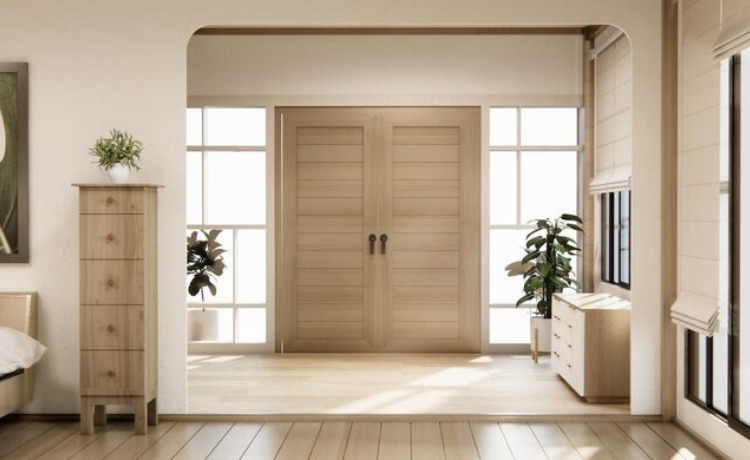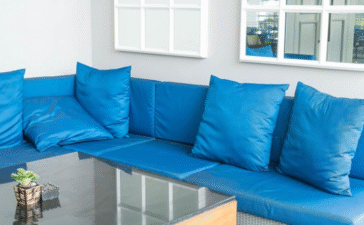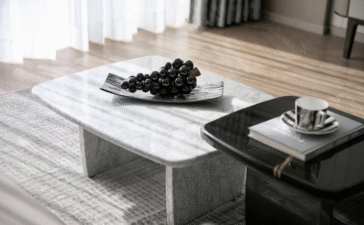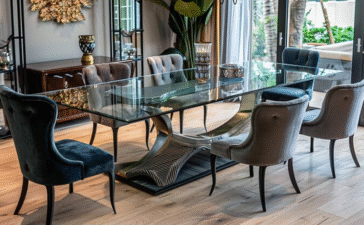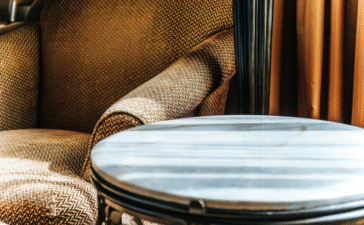Interior double doors are experiencing a remarkable surge in popularity among homeowners, designers, and architects who want to create stunning focal points while maximizing functionality. These elegant door solutions serve as both architectural features and practical room dividers, offering enhanced light flow, improved accessibility, and a sophisticated aesthetic that single doors simply cannot match.
The decision to install interior double doors involves careful consideration of design elements, material choices, and functional requirements. Whether you’re renovating a historic home or designing a contemporary space, selecting the perfect double doors requires understanding how different styles, materials, and configurations can transform your living environment.
This comprehensive guide will help you navigate the world of interior double doors, from understanding basic door types to mastering installation and maintenance techniques. By the end, you’ll have the knowledge needed to make informed decisions that enhance both the beauty and functionality of your home.
What Are Interior Double Doors?
Interior double doors consist of two door panels that work together to create a single entryway, typically spanning wider openings than standard single doors. Unlike their single counterparts, double doors provide enhanced visual impact and improved traffic flow, making them ideal for high-usage areas and formal spaces.
The primary distinction between single and double doors lies in their opening mechanism and visual presence. While single doors pivot on one side, double doors can open from the center outward or operate through sliding mechanisms. This configuration allows for wider openings and creates a more dramatic entrance between rooms.
Residential applications for interior double doors include dining rooms, home offices, master bedrooms, and living areas where homeowners want to maintain separation while preserving an open feel. Commercial spaces frequently utilize double doors in conference rooms, executive offices, and hospitality venues where both functionality and impressive aesthetics matter.
Types of Interior Double Doors
French Doors
French doors remain the most recognizable type of interior double doors, featuring glass panels set within wooden or composite frames. These elegant double doors originated in 17th-century France and continue to embody timeless sophistication in both traditional and modern homes.
The glass panels in French door designs allow natural light to flow between rooms while maintaining visual connection. This light flow capability makes French doors particularly valuable in homes where maximizing brightness is essential. Modern French doors often incorporate energy-efficient glass and contemporary hardware while preserving their classic appeal.
Bifold Doors
Space-saving bifold doors operate on a track system that allows panels to fold against each other when opening. These folding doors excel in areas where swing clearance is limited, making them perfect for closets, kitchens, or laundry rooms with compact door design requirements.
The folding mechanism of bifold doors can accommodate various opening widths while requiring minimal floor space when open. Quality bifold systems feature smooth-operating hardware and durable panel construction that withstands frequent use in high-traffic areas.
Sliding Doors
Sliding double doors include both pocket doors that disappear into wall cavities and barn-style sliding doors that travel along exposed tracks. These modern door solutions offer excellent space-saving benefits while creating striking visual elements in contemporary homes.
Barn doors have gained tremendous popularity in recent years, combining rustic charm with modern functionality. Pocket doors provide the ultimate space-saving solution, completely disappearing when open to create seamless room transitions.
Panel Doors
Panel double doors feature raised or recessed wooden panels that create depth and visual interest. These traditional door styles work exceptionally well in formal spaces like dining rooms, libraries, or home offices where classic elegance is desired.
Wooden interior doors with panel construction offer excellent durability and can be customized with various panel configurations, from simple two-panel designs to elaborate multi-panel arrangements that complement specific architectural styles.
Materials Used in Interior Double Doors
Wood Options
Wooden double doors represent the gold standard for interior applications, offering unmatched beauty, durability, and customization options. Popular wood species include oak, known for its strength and distinctive grain patterns, walnut prized for its rich chocolate tones, and mahogany celebrated for its stability and elegant appearance.
Each wood type brings unique characteristics to door construction. Oak doors provide exceptional durability and work well with both traditional and contemporary finishes. Walnut offers sophisticated dark tones that complement modern and transitional design schemes. Mahogany delivers superior dimensional stability and takes stain beautifully.
The wood finish options are virtually limitless, from natural clear coats that highlight grain patterns to painted finishes that match specific color schemes. Quality wooden doors also provide excellent insulation properties and can last for decades with proper maintenance.
Glass Varieties
Glass double doors offer versatility through various transparency levels and decorative options. Frosted glass provides privacy while maintaining light transmission, making it ideal for home offices or bedrooms. Clear glass panels maximize light flow and visual connection between spaces.
Tinted glass options add color and reduce glare while still allowing light passage. Textured glass varieties provide privacy with decorative appeal. The choice between different glass types depends on privacy requirements, aesthetic preferences, and the specific room applications.
Composite and MDF Solutions
Composite double doors and MDF doors offer cost-effective alternatives to solid wood while providing excellent performance characteristics. These affordable interior doors use engineered wood products that resist warping and provide consistent dimensions.
Modern composite doors often feature wood veneer faces over engineered cores, delivering the appearance of solid wood at reduced costs. MDF doors accept paint finishes exceptionally well and provide smooth, consistent surfaces that work well in contemporary designs.
Steel and Aluminum
Steel doors and aluminum double doors serve specialized applications where security, fire resistance, or industrial aesthetics are priorities. These industrial door styles work particularly well in modern loft spaces, commercial applications, or homes with contemporary industrial design themes.
Metal doors offer superior security features and fire resistance capabilities. They require minimal maintenance and provide excellent longevity, though they may not suit all decorative preferences or provide the warmth associated with wood doors.
Choosing the Right Style for Your Home
Modern and Contemporary Approaches
Modern interior doors emphasize clean lines, minimal hardware, and uncluttered appearances. Contemporary double doors often feature flush surfaces, geometric glass patterns, or sleek metal accents that complement minimalist design philosophies.
These minimalist design approaches work well in homes with open floor plans where doors serve as architectural elements rather than decorative focal points. The emphasis on simplicity allows the doors to integrate seamlessly with surrounding design elements.
Traditional and Rustic Aesthetics
Traditional double doors celebrate classic craftsmanship through raised panels, decorative moldings, and rich wood finishes. These classic wood doors work exceptionally well in colonial, craftsman, or traditional home styles where architectural authenticity matters.
Rustic interior doors embrace natural wood textures, distressed finishes, and substantial construction that reflects country or farmhouse design sensibilities. These doors often feature visible hardware and weathered appearances that add character to casual living spaces.
Industrial and Minimalistic Designs
Industrial double doors typically incorporate steel frames, glass panels, and exposed hardware that reflects modern urban aesthetics. These modern loft doors work well in converted industrial spaces or contemporary homes that embrace raw materials and functional design.
Minimalistic door designs focus on essential elements while eliminating unnecessary ornamentation. The result is doors that serve their function without competing for attention with other design elements in the space.
Functionality and Space Considerations
Space-Saving Solutions
Space-saving doors become essential in homes where every square foot matters. Sliding double doors eliminate swing clearance requirements, making them ideal for narrow hallways or rooms with furniture placement constraints.
Pocket doors represent the ultimate space-saving solution by disappearing completely into wall cavities when open. These doors work particularly well between kitchens and dining areas where maximum opening width enhances entertaining and daily living.
Privacy and Soundproofing
Privacy doors serve important functions in homes where acoustic separation between rooms is desired. Soundproof double doors typically feature solid core construction and proper sealing around the frame perimeter to minimize sound transmission.
The choice between solid wood and glass panels significantly impacts acoustic performance. Solid wood doors provide better sound isolation, while glass panels maintain visual connection at the expense of privacy. Acoustic doors with specialized construction can achieve both aesthetic appeal and sound control.
Security and Safety Features
Fire-rated double doors meet building code requirements for certain applications while providing enhanced safety features. These security doors often include specialized hardware, fire-resistant cores, and proper installation techniques that meet safety standards.
Safety features in interior doors include child-safe mechanisms, smooth edges, and durable construction that withstands daily use. The selection of appropriate safety features depends on household requirements and specific room applications.
Customization and Personalization Options
Personalized Design Approaches
Custom double doors allow homeowners to create unique solutions that perfectly match their specific requirements. Personalized door designs can accommodate non-standard openings, incorporate specific architectural details, or match existing home features.
Custom hardware options include designer handles, decorative hinges, and specialized locking mechanisms that enhance both function and appearance. The ability to specify exact dimensions, materials, and finishes ensures perfect integration with existing architecture.
Color and Finish Selection
Color finishes for doors have expanded dramatically, with popular options ranging from classic white and natural wood tones to bold contemporary colors. Black doors have gained popularity in modern designs, while custom door colors allow perfect coordination with interior design schemes.
Finish options include matte surfaces that hide fingerprints and provide subtle elegance, gloss finish doors that reflect light and create dramatic impact, and textured finishes that add tactile interest and hide minor imperfections.
Installation Guidelines for Interior Double Doors
Proper double door installation requires careful measurement, appropriate tools, and attention to detail. The process begins with accurate measurement of the existing opening, ensuring adequate clearance for the door operation and proper fit.
Essential tools include levels, drills, chisels, and measuring devices. The installation process involves removing existing doors and hardware, preparing the opening, installing new frames, and adjusting hardware for proper operation.
Professional door installation becomes advisable for complex applications involving structural modifications, specialized hardware, or situations where precise fit and operation are critical. Experienced installers can ensure proper alignment, smooth operation, and long-term reliability.
Also Check: “black interior doors“
Maintenance and Care Strategies
Door maintenance requirements vary significantly based on material choices and environmental conditions. Wooden doors benefit from regular cleaning with appropriate wood-safe products and periodic refinishing to maintain appearance and protection.
Cleaning wooden doors involves gentle cleaning solutions that remove dirt without damaging finishes. Hardware maintenance includes lubricating hinges and adjusting mechanisms to ensure smooth operation throughout the door’s lifespan.
Common repair issues include squeaky hinges, which respond to lubrication, and sticky locks that may require cleaning or adjustment. Repairing interior doors often involves simple maintenance tasks that homeowners can perform with basic tools and minimal experience.
Making the Right Choice for Your Home
Selecting interior double doors requires balancing aesthetic preferences with functional requirements and budget considerations. The best choices complement existing architecture while meeting specific performance needs for privacy, security, and daily use patterns.
Consider your home’s architectural style, traffic patterns, and specific room requirements when evaluating different door options. The investment in quality doors pays dividends through enhanced home value, improved functionality, and lasting satisfaction with your choice.
Take time to visit showrooms, examine different materials and styles, and consult with professionals who can provide expert guidance for your specific situation. The perfect interior double doors will enhance your home’s beauty while providing years of reliable service.
Frequently Asked Questions
What are the main benefits of choosing interior double doors over single doors?
Interior double doors provide several advantages over single door alternatives. They create wider openings that improve accessibility and traffic flow, particularly beneficial for moving furniture or accommodating mobility devices. Double doors allow more natural light to pass between rooms when featuring glass panels, creating brighter interior spaces. They also provide enhanced visual impact and can serve as architectural focal points that add value to your home. Additionally, double doors offer better ventilation when both panels are opened, improving air circulation throughout the house.
How do I properly measure interior double doors?
Accurate measurement is crucial for proper door installation. Start by measuring the rough opening width at the top, middle, and bottom, using the smallest measurement to ensure proper fit. Measure the height from the floor to the top of the opening at both sides and the center. For double doors, the standard rough opening is typically 72 inches wide for a 60-inch door pair, allowing space for the frame and adjustment. Always verify that the opening is square using a carpenter’s square, and check for level floors and plumb sides before ordering doors.
Can I install double doors in a small room without overwhelming the space?
Yes, double doors can work effectively in smaller rooms when properly selected and installed. Choose doors with glass panels to maintain visual connection and prevent the space from feeling closed off. Sliding or bifold configurations work better than swing doors in tight spaces since they require less clearance. Consider pocket doors that disappear into the wall when opened, providing maximum space efficiency. Light-colored finishes and minimal hardware help doors blend with the surroundings rather than dominating the room.
What materials offer the best performance for interior double doors?
The best material depends on your specific requirements and budget. Solid wood doors provide excellent durability, sound insulation, and timeless appearance but require more maintenance and cost more initially. Composite and MDF doors offer consistent performance at lower costs and work well for painted finishes. Glass doors maximize light transmission but provide minimal privacy or sound control. For high-traffic areas, choose solid core construction regardless of surface material. Consider your home’s humidity levels, as some materials perform better in varying moisture conditions.
How do I maintain wooden interior double doors to ensure longevity?
Proper maintenance of wooden doors involves regular cleaning, periodic refinishing, and prompt attention to minor issues. Clean doors monthly using a soft cloth and wood-appropriate cleaner, avoiding excess moisture that can damage finishes. Inspect and lubricate hinges every six months to prevent squeaking and ensure smooth operation. Check for loose screws in hinges and hardware, tightening as needed. Refinish doors every 5-7 years or when the finish shows wear, sanding lightly and applying fresh stain or paint. Address scratches or dents promptly to prevent moisture infiltration that can cause more serious damage.
What are the typical costs associated with interior double door installation?
Interior double door costs vary significantly based on materials, size, hardware quality, and installation complexity. Basic hollow-core doors start around $200-400 per pair, while solid wood doors range from $600-2000 or more. Custom doors can cost $1500-5000 depending on specifications. Installation costs typically add $300-800 depending on whether modifications to the existing opening are required. Additional expenses may include new trim, hardware upgrades, and finish work. Professional installation is recommended for complex projects, while handy homeowners can tackle straightforward replacements to save on labor costs.
